USB-C is a new interface that has the benefit of being omnidirectional (meaning it can face up or down and still work, just not sideways). On top of that several devices can be powered through the port including a new slew of notebooks, mostly from Apple. The biggest drawback has been lack of adoption and therefore lack of third parties making USB-C compatible devices. With the new release of Apple’s current generation MacBook Pro along with releases form Dell, Lenovo, and HP, USB-C is more prevalent and more devices are coming on the scene. Lexar has recently added a handful of USB-C devices including the Lexar C1 microSD Reader and Lexar JumpDrive C20c Flash Drive.
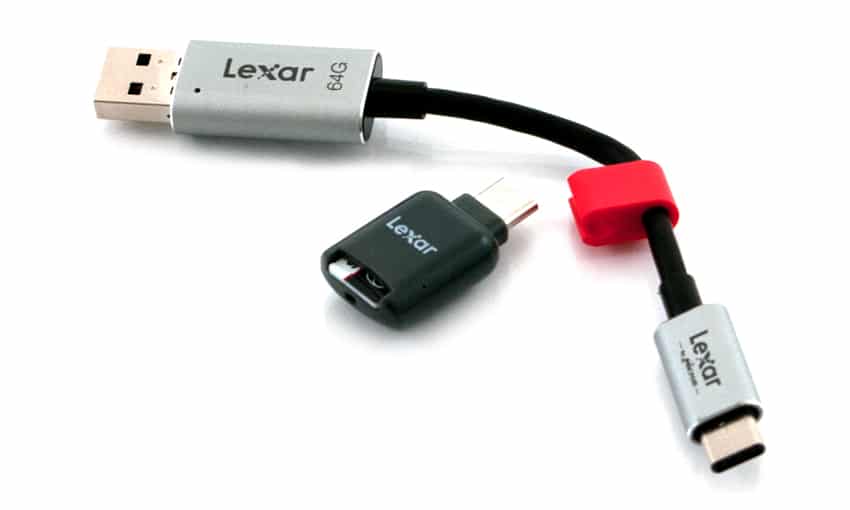
The Lexar C1 microSD Reader is a very compact microSD card reader that allows users to quickly offload their media onto a USB-C device. This device is ideal for users that take lots of photos, video, or use GoPro cameras. Once the microSD card gets full or close to full, they can plug it into their USB-C device, unload it, and get back to shooting. Customers can also use the C1 with a microSD card to expand storage in devices such as the Google Pixel phone, LG V20 phone, Huawei Honor 8 phone, Google Pixel C tablet, and the ASUS ZenPad tablet.
The Lexar C1 microSD comes with a 1-year limited warranty and the low price of $12.99.
Lexar C1 microSD specifications
- Interface: USB-C (USB 3.1 (Gen 1))
- Compatibility:
- Android and Windows 7/8/8.1/10+
- Mac OS X+
- Designed to work with Lexar microSD cards and may not be compatible with all microSD cards
Buying a USB-C device, such as a new phone, tablet, or notebook, can present another issue. Unless customers are in the market to replace all their devices they will be left with a handful of USB type-A connectors. Lexar has an answer for this as well with its new Lexar JumpDrive C20c Flash Drive. One end has a USB-C interface and the other a USB Type A interface. With this users can offload content onto USB 3.0 and USB 2.0 devices. The C20c also has built in storage, enabling users to quickly offload content onto the drive to be moved to a USB type A device later. On top of using it to offload content it can also be used to charge devices. Lexar claims the C20c can hit speeds of up to 150MB/s read and 60MB/s write
The Lexar JumpDrive C20c Flash Drive comes in three capacities: 32GB, 64GB, and 128GB and has a 3-year limited warranty.
Lexar JumpDrive C20c Flash Drive specifications
- Capacity: 32GB, 64GB, 128GB
- Performance
- Read: 150MB/s
- Write: 60MB/s
- Compatibility: USB 3.1 (Gen 1),backward compatible with USB 3.0 and USB 2.0
Design and build
The Lexar C1 microSD is very compact, roughly the size of 4 U.S. quarters stack on top of one another. This makes the device incredible portable, however, the body is made of plastic and runs the risk of being damaged if users are overly hard on it. One end has the USB-C interface and the other has a slot for the microSD card.
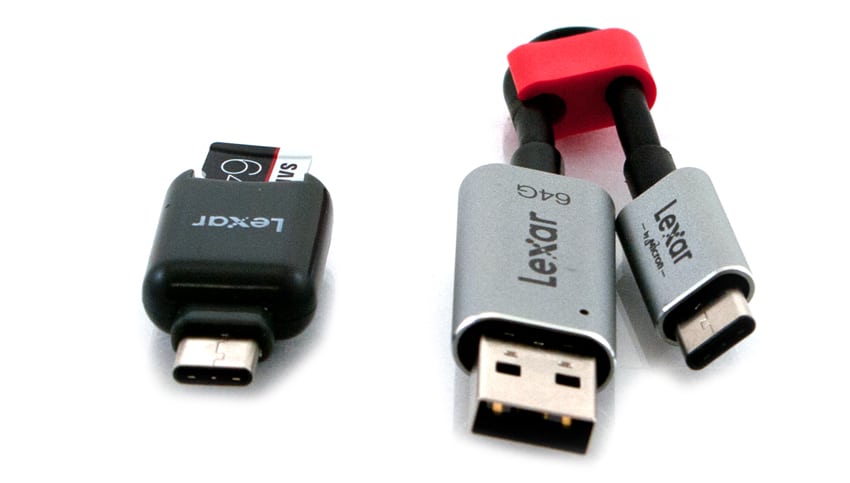
The Lexar JumpDrive C20c Flash Drive is roughly 5 inches long with a UCB-C interface on one side and USB Type A interface on the other. By each interface is a small aluminum body where the storage is located. There is a small cord, roughly 2.5 inches long connecting both sides. In the middle of the cord is a clip that allows users to fold it in half thus making it highly portable. Since it is made of tougher stuff it is likely more durable than the C1.
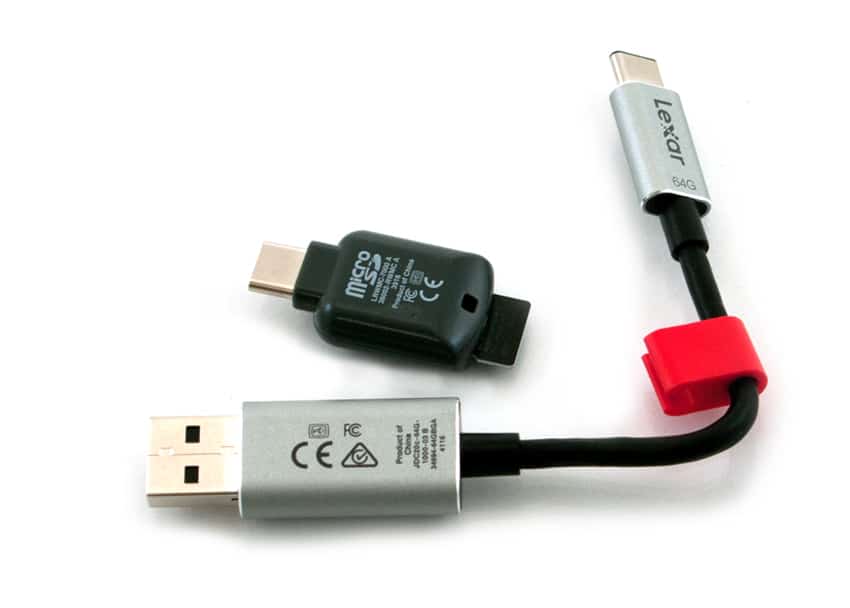
Performance
To test performance on both of these USB-C devices we ran BlackMagic Speed Test using a current generation MacBook (typically referred to as the 12-inch MacBook) and IOMeter on a Dell XPS 13 notebook.
For the Lexar C1 microSD we used a Samsung 64 Pro+ microSD card. It should be kept in mind that there are no speed claims with the C1 as the performance will very with the microSD card chosen. With BlackMagic we saw write speeds of 70.2MB/s and read speeds of 89.5MB/s with a 5GB test file size.
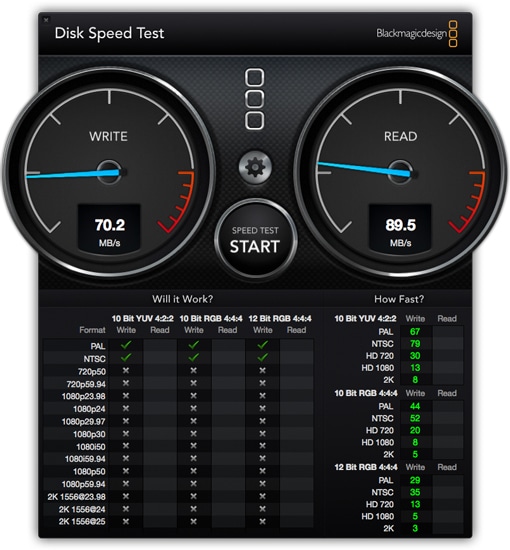
With IOMeter we saw sequential 2MB write speeds of 72.29MB/s and read speeds of 85.1MB/s. Random 2MB write speeds dropped down to 4.62MB/s and read speeds of 82.45MB/s. Looking at random 4k we saw a write performance of 7.6 IOPS and a read performance of 857 IOPS.
We ran the same barrage of tests on the Lexar JumpDrive C20c Flash Drive. The BlackMagic Speed Test with a 5GB test file gave us 68.6MB/s write and 129.1MB/s read.
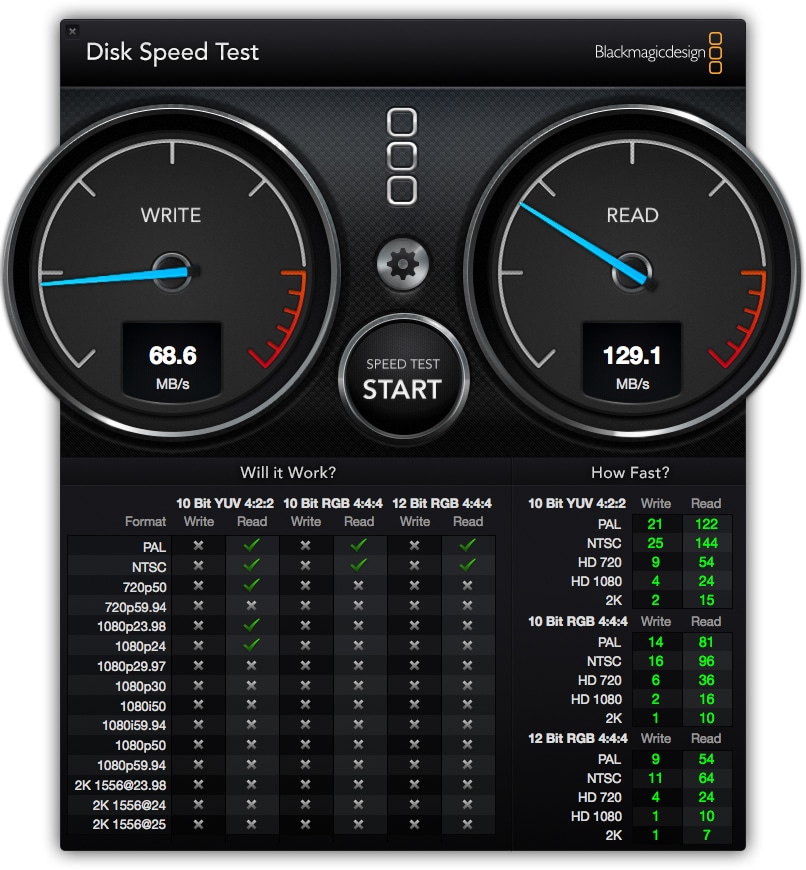
With IOMeter we saw sequential 2MB write speeds of 77.99MB/s and read speeds of 121.65MB/s. Random 2MB write speeds dropped down to 12.92MB/s and read speeds of 102.97MB/s. Looking at random 4k we saw a write performance of 38.34 IOPS and a read performance of 585 IOPS.
Conclusion
Lexar has introduced a handful of new products to be used in conjunction with the new USB-C interface that is becoming more commonly adopted. The C1 microSD Reader is a very small, and therefore easily portable microSD card reader that makes offloading in the field a pinch. Its diminutive size makes it ideal for expanding the capacity of USB-C friendly phones and tablets. Lexar also introduced the JumpDrive C20c Flash Drive that has both Type A and Type C interfaces enabling users to offload files from a USB-C device to an older Type A device (it is also compatible with USB 2.0 devices). The C20c can double as a charging cord with built in storage for offloading larger or high volumes of files that can be moved to another storage medium later.
We used to notebooks for testing, a current-generation MacBook and a Dell XPS 13, as portable devices are more inline with the use cases designed for these devices. Using a Samsung 64 Pro+ microSD card we tested the C1 and saw transfer speeds as high as 89.5MB/s read and 72.29MB/s write. We also saw a random 4k performance of 7.6 IOPS write and 857 IOPS read. The C20c gave us transfer speeds as high as 129.1MB/s read and 77.99MB/s write, not quite hitting its claimed read speed but going well over its claimed write speed. With our random 4k test we saw performance numbers of 38.34 IOPS write and 585 IOPS read.
Pros
- Very compact and easily portable
- Works with new USB-C Devices
- The C20c enables users to use both Type A and Type C devices
Cons
- The C20c didn’t hit claimed read speeds
The Bottom Line
The Lexar C1 microSD Reader and JumpDrive C20c Flash Drive are highly portable devices that let uses keep their USB-C devices from filling up with their quick and easy offload capabilities.




 Amazon
Amazon